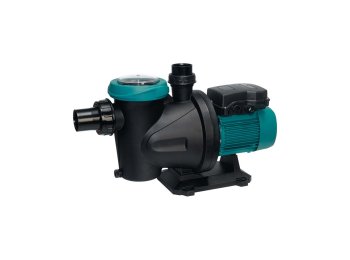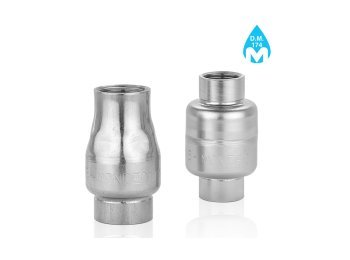Hydromassage Pump: features and technical advice.
The heart of the system, responsible for circulating the water and creating that massaging jet that makes the experience truly effective, is the hydromassage pump.
If you are designing or planning to upgrade a hydromassage system, it is essential to choose the right pump and evaluate its features before purchasing.
Hydromassage: a wellness ritual increasingly popular.
Hydromassage is a form of therapeutic massage performed through mixed water and air jets, which stimulate the body thanks to the pressure exerted on muscles and tissues.
Its benefits are well known and include muscle relaxation, improved circulation, and support for physical rehabilitation. It can be installed in bathtubs, mini-pools, home spas, or wellness centers.
Its benefits are well known and include muscle relaxation, improved circulation, and support for physical rehabilitation. It can be installed in bathtubs, mini-pools, home spas, or wellness centers.

This ritual has its roots in the history of the ancient Egyptians, Greeks and Romans, who had already recognized the therapeutic value of water, but it was in the 20th century that hydromassage became technology.
From the first tub with integrated hydromassage jets at the end of the 1960s, in the 1980s and 1990s hydromassage became increasingly widespread, moving from spas to hotels, and finally to private homes with a truly vast range of options.
The hydromassage pump: a guide to choosing.
The whirlpool pump is the engine of the system, as it draws in the water and pushes it into the jets to create the massaging effect.
To choose the right pump for your system, it is essential to consider its features for correct sizing, in order to ensure the required comfort while avoiding uneconomical and unsustainable oversizing. In addition to efficiency, given the type of application, it is very important that the pump ensures maximum quietness. Whether it's a tub or a pool, the main parameters for choosing a pump — namely flow rate and head — also apply in the case of hydromassage.
For the system to be efficient, the right balance between flow rate and head must be found. A high flow rate and the right head ensure a full massaging jet; of course, the more jets there are, the greater the required flow rate; likewise, if the pipes are particularly long or the system has bends and elevation differences, the head must also be greater.
Too low a flow rate means weak jets; too low a head results in ineffective jets even if the flow rate is high. Since in pump operation an increase in head leads to a decrease in flow rate, and vice versa, it is essential to choose a pump with a curve suited to the required working point.
Too low a flow rate means weak jets; too low a head results in ineffective jets even if the flow rate is high. Since in pump operation an increase in head leads to a decrease in flow rate, and vice versa, it is essential to choose a pump with a curve suited to the required working point.
Other parameters to consider are power and type of power supply, which are closely related.
The starting point is always the type of system: in the case of a pool, the power will clearly be higher than that required for a bathtub.
As for the power supply, up to 1.5–2 HP single-phase (230V) can be used, while for higher power ratings, three-phase (400V) is recommended.
Materials and construction details.
Materials are an important aspect: the hydromassage pump must ensure strength, performance and long-term durability.
The hydromassage pumps selected by Water Fitters stand out for their particular attention to components and materials used:
- Motor housing in aluminium, offering a lightweight and robust structure, helping dissipate the heat generated during motor operation.
- Pump shaft in stainless steel for high corrosion and wear resistance, ensuring long service life.
- Suction body, impeller housing and diffuser in technopolymer. This material provides lightness and chemical resistance, reducing the risk of corrosion and improving energy efficiency by lowering the overall weight of the pump.
- NBR/EPDM seals offering excellent resistance to oils, greases and chemical agents, ensuring tightness and long-term flexibility.
- Mech seal in alumina-graphite. This combination in mechanical seals ensures low friction and wear resistance, preventing leaks and ensuring quiet, efficient operation.
Hydromassage pump: from replacement in existing systems to custom design.
Purchasing a hydromassage pump is useful when it comes to repairing faults or carrying out maintenance in existing domestic or professional systems. In this case, it's important to rely on compatible, reliable spare parts.
In other cases, it may be a matter of increasing system power or transforming a standard bathtub into a hydromassage tub.
A hydromassage pump is essential when designing custom systems, whether in high-end homes or in hotels and spas.
Designers and architects often request to integrate the technology into the bathroom or wellness space design, without being constrained by preassembled products.
Installing a hydromassage pump in a pool is a great way to add a wellness area and turn a standard pool into a complete relaxation space.
In this case, the pump can be integrated into the existing circuit, or a dedicated pump can be installed just for the hydromassage jets.
The latter is the most recommended solution, as it avoids any interference with the filtration system.


























